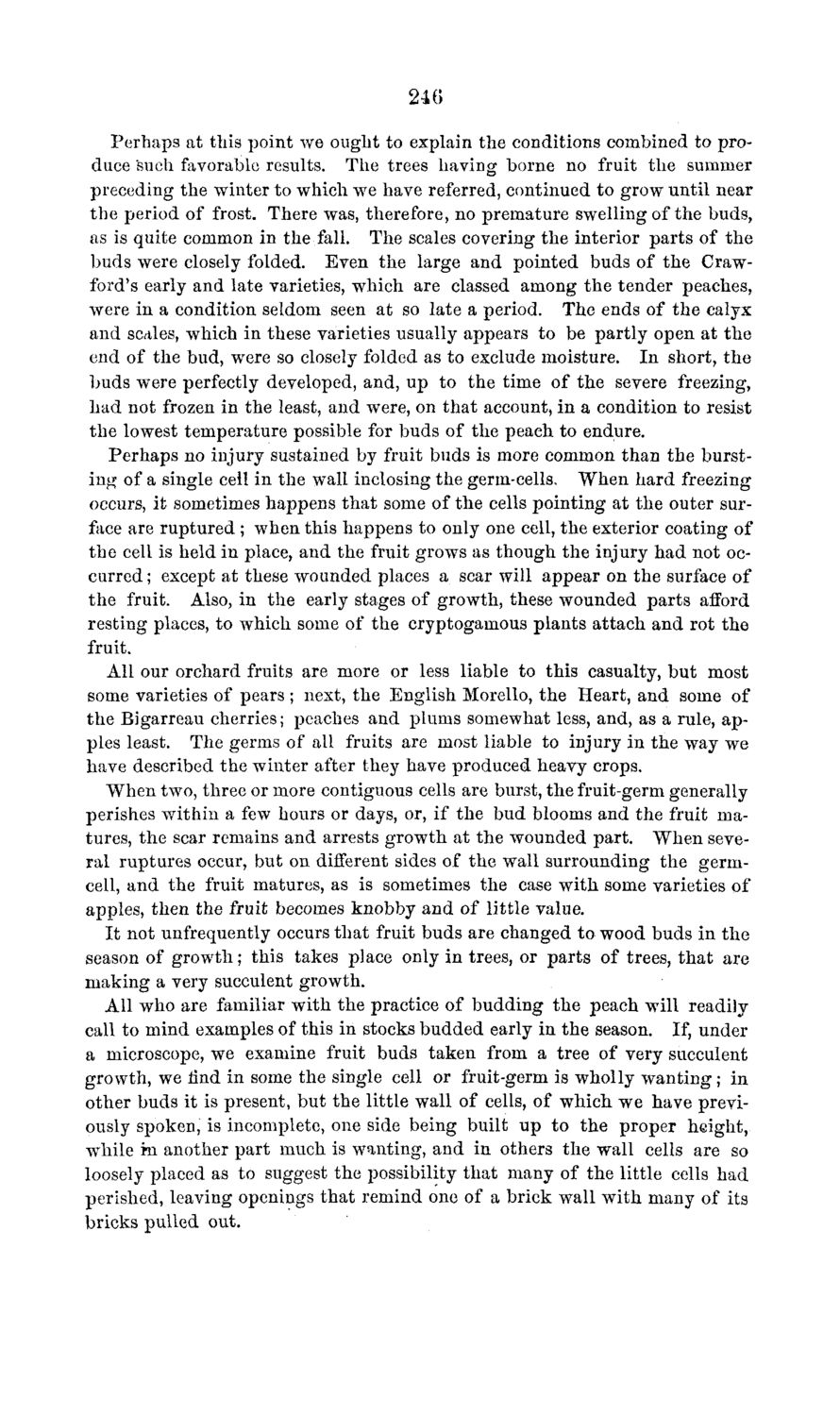| |
| |
Caption: Board of Trustees Minutes - 1869
This is a reduced-resolution page image for fast online browsing.

EXTRACTED TEXT FROM PAGE:
240 Perhaps at this point we ought to explain the conditions combined to produce "such favorable results. The trees having borne no fruit the summer preceding the winter to which we have referred, continued to grow until near the period of frost. There was, therefore, no premature swelling of the buds, as is quite common in the fall. The scales covering the interior parts of the buds were closely folded. Even the large and pointed buds of the Crawford's early and late varieties, which are classed among the tender peaches, were in a condition seldom seen at so late a period. The ends of the calyx and scales, which in these varieties usually appears to be partly open at the end of the bud, were so closely folded as to exclude moisture. In short, the buds were perfectly developed, and, up to the time of the severe freezing, had not frozen in the least, and were, on that account, in a condition to resist the lowest temperature possible for buds of the peach to endure. Perhaps no injury sustained by fruit buds is more common than the bursting of a single cell in the wall inclosing the germ-cells. When hard freezing occurs, it sometimes happens that some of the cells pointing at the outer surface are ruptured; when this happens to only one cell, the exterior coating of the cell is held in place, and the fruit grows as though the injury had not occurred ; except at these wounded places a scar will appear on the surface of the fruit. Also, in the early stages of growth, these wounded parts afford resting places, to which some of the cryptogamous plants attach and rot the fruit. All our orchard fruits are more or less liable to this casualty, but most some varieties of pears ; next, the English Morello, the Heart, and some of the Bigarreau cherries; peaches and plums somewhat less, and, as a rule, apples least. The germs of all fruits are most liable to injury in the way we have described the winter after they have produced heavy crops. When two, three or more contiguous cells are burst, the fruit-germ generally perishes within a few hours or days, or, if the bud blooms and the fruit matures, the scar remains and arrests growth at the wounded part. When several ruptures occur, but on different sides of the wall surrounding the germcell, and the fruit matures, as is sometimes the case with some varieties of apples, then the fruit becomes knobby and of little value. It not unfrequently occurs that fruit buds are changed to wood buds in the season of growth; this takes place only in trees, or parts of trees, that are making a very succulent growth. All who are familiar with the practice of budding the peach will readily call to mind examples of this in stocks budded early in the season. If, under a microscope, we examine fruit buds taken from a tree of very succulent growth, we rind in some the single cell or fruit-germ is wholly wanting; in other buds it is present, but the little wall of cells, of which we have previously spoken, is incomplete, one side being built up to the proper height, while in another part much is wanting, and in others the wall cells are so loosely placed as to suggest the possibility that many of the little cells had perished, leaving openings that remind one of a brick wall with many of its bricks pulled out.
| |